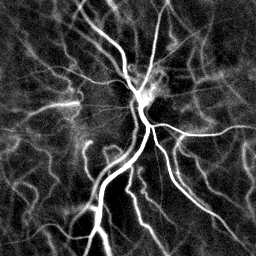
Live action heartbeat. (Photo and animation by: Wiki)
NEW YORK — The Coronavirus, which is actively spreading worldwide at a rapid rate, has no known cure. My family is taking social-distancing extra seriously because of our worry for my grandfather, Dr. Jacob Shani. A cardiologist, he continues to work every day in a Maimonides hospital in Brooklyn, New York, which is the epicenter of the coronavirus.
Five of the other cardiologists on his team already have the virus, so there is more of a need for him to come to work.
In many places, doctors have made makeshift hospitals because there are too many cases in hospitals and not enough space and resources. My grandfather said Maimonides even had to “turn many of our wards and all our ICUs into COVID and build more ICU space.”
As of May 8, there are over 1.2 million U.S. cases of coronavirus and more than 73,000 deaths, according to the Center for Disease Control (CDC). These numbers have doubled in three weeks and continue to grow at an exponential rate. The virus has a relatively high mortality rate, especially for people with weak immune systems and the elderly.
If people do not take social distancing seriously, patients will overwhelm the available resources forcing doctors into nearly impossible decisions, such as choosing who will get the resources they need to live, and who will not.
According to news reports, many doctors and nurses choose not to go home to their families at all, as to not risk bringing coronavirus home and infecting anyone else.
“Hospitals learned to be more efficient, doctors learned how to be more nimble in many ways,” he says, “[doctors] learned how to adjust in real-time to situations that changed and learned how to streamline our supply lines.”
 NOLAbeings Multimedia artist Claire Bangser created NOLAbeings as a portrait-based story project that marries...
NOLAbeings Multimedia artist Claire Bangser created NOLAbeings as a portrait-based story project that marries...  Voodoo in New Orleans: Reviving history: New Orleans fortune telling This article takes a deep dive into the history of Voodoo in New Orleans, its hybridization with Catholicism, and its present-day place in the city's culture. The author visits fortune-tellers in the French Quarter, using their guidance as a tool for introspection rather than a deterministic predictor of the future. Through her experiences in New Orleans, the author feels a mystical connection to both the past and the future.
Voodoo in New Orleans: Reviving history: New Orleans fortune telling This article takes a deep dive into the history of Voodoo in New Orleans, its hybridization with Catholicism, and its present-day place in the city's culture. The author visits fortune-tellers in the French Quarter, using their guidance as a tool for introspection rather than a deterministic predictor of the future. Through her experiences in New Orleans, the author feels a mystical connection to both the past and the future. 